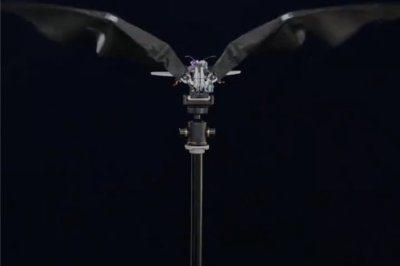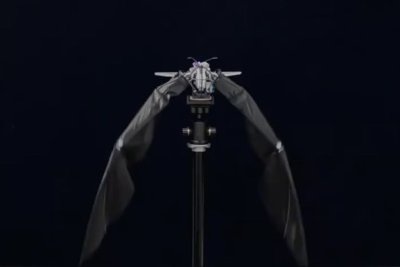The Chinese military’s top drone-makers have built a new robotic bird that they say could have far-reaching applications, state media said.
Images aired on Saturday showed the ornithopter dubbed “Little Falcon” taking flight during a recent test in Xi’an, capital city of China’s northwestern Shaanxi province. A national news outlet described it as “the most agile and lifelike” bird-like drone anywhere in the world, and likely to lead the research in the field for years to come.
For centuries, inventors have looked to birds for inspiration to create ornithopters—machines that achieve lift by flapping wings—chiefly for the purpose of human flight. In director Denis Villeneuve’s adaptation of the Dune series, characters also use ornithopters as a means of travel. The aircraft take off and land using flapping wings, which can fold back onto the fuselage to facilitate a rapid descent, much like the targeted dive of a bird of prey.
CCTV
The team of researchers at Northwestern Polytechnical University, however, had a different vision for their ornithopter. It is a smaller, unmanned aerial vehicle that can serve multiple functions, including for the Chinese People’s Liberation Army.
China’s state media outlets, including state broadcaster CCTV, covered the drone’s debut. Potential applications included “military reconnaissance, ecological monitoring and environment protection,” the channel said.
The robotic bird’s nimble flight controls were made possible by the invention of a new crank mechanism, the report said, allowing the drone to fold its wings while flapping at the same time.
It can also make turns by folding one wing at a time, and extend both to increase its energy efficiency while gliding, according to CCTV.
“Such aircraft are suitable for reconnaissance, surveillance and even precision strike missions in special operations,” China’s nationalistic newspaper the Global Times said on Sunday about possible future applications.
An unnamed expert quoted in the state-run tabloid said the drone’s lifelike physical appearance would add a layer of complexity to enemy attempts to effectively detect it.
1 of 2

CCTV

CCTV

CCTV
Northwestern Polytechnical University is one of China’s major defense research institutions and a direct supplier of drones to the Chinese military, according to Australian Strategic Policy Institute think tank’s university tracker.
“It is heavily engaged in military research, describing itself as ‘devoted to improving and serving the national defense science and technology industry,'” ASPI said. It is “the only Chinese university hosting a UAV [unmanned aerial vehicle] defense laboratory. The university has close ties to state-owned shipbuilding and aerospace conglomerates.”
The team members behind the latest drone also developed a robotic dove that last October flew non-stop for three hours, five minutes and 30 seconds, breaking their own record, according to state media reports.
The researchers behind the falcon drone project could not be reached for comment. China’s Defense Ministry did not respond to a written request for comment.
Last year, the EU-funded GRIFFIN project demonstrated a robotic bird that could land on tree branches using talons. The device could “substitute rotorcrafts in some environments,” its creators said.
There have been other recent successes, too. In a 2020 study in Science Robotics, a peer-reviewed journal published by the American Association for the Advancement of Science, a multinational team of mechanical engineers introduced a flapping X-wing ornithopter, weighing just 26 grams, that they said could be used for “micro aerial vehicle missions.”
Uncommon Knowledge
Newsweek is committed to challenging conventional wisdom and finding connections in the search for common ground.
Newsweek is committed to challenging conventional wisdom and finding connections in the search for common ground.


